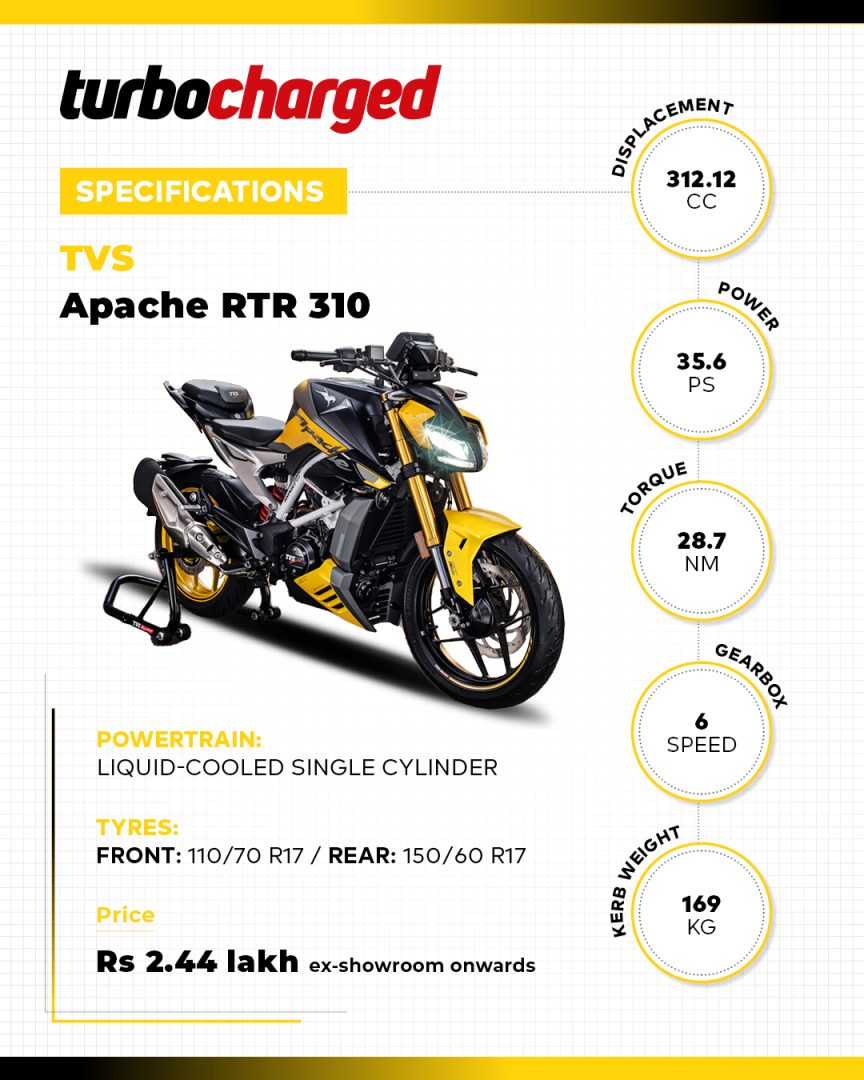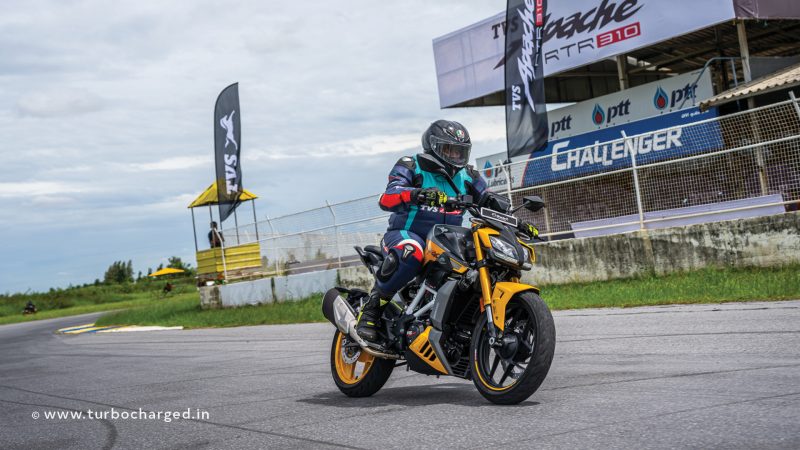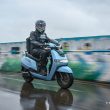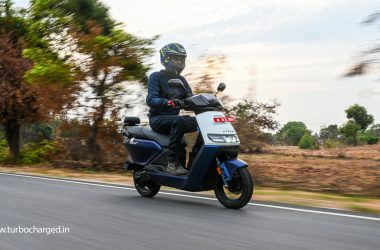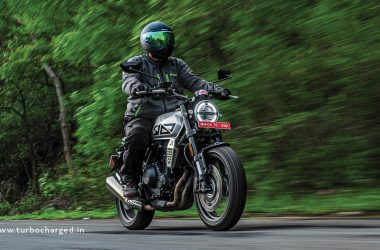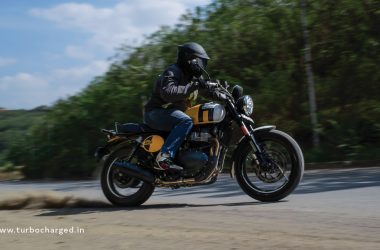Since its launch in 2005, TVS’s Apache has become one of the most well-liked motorcycles in its category and enjoys a sizable fan base. The model has sold more than five million units over the years, making it a genuine success. The motorcycle has since increased in size and capability, and the brand-new Apache RTR 310 has been introduced just in time for its 18th birthday. We took a flight to Bangkok to test out the most recent streetfighter on both the road and the track.
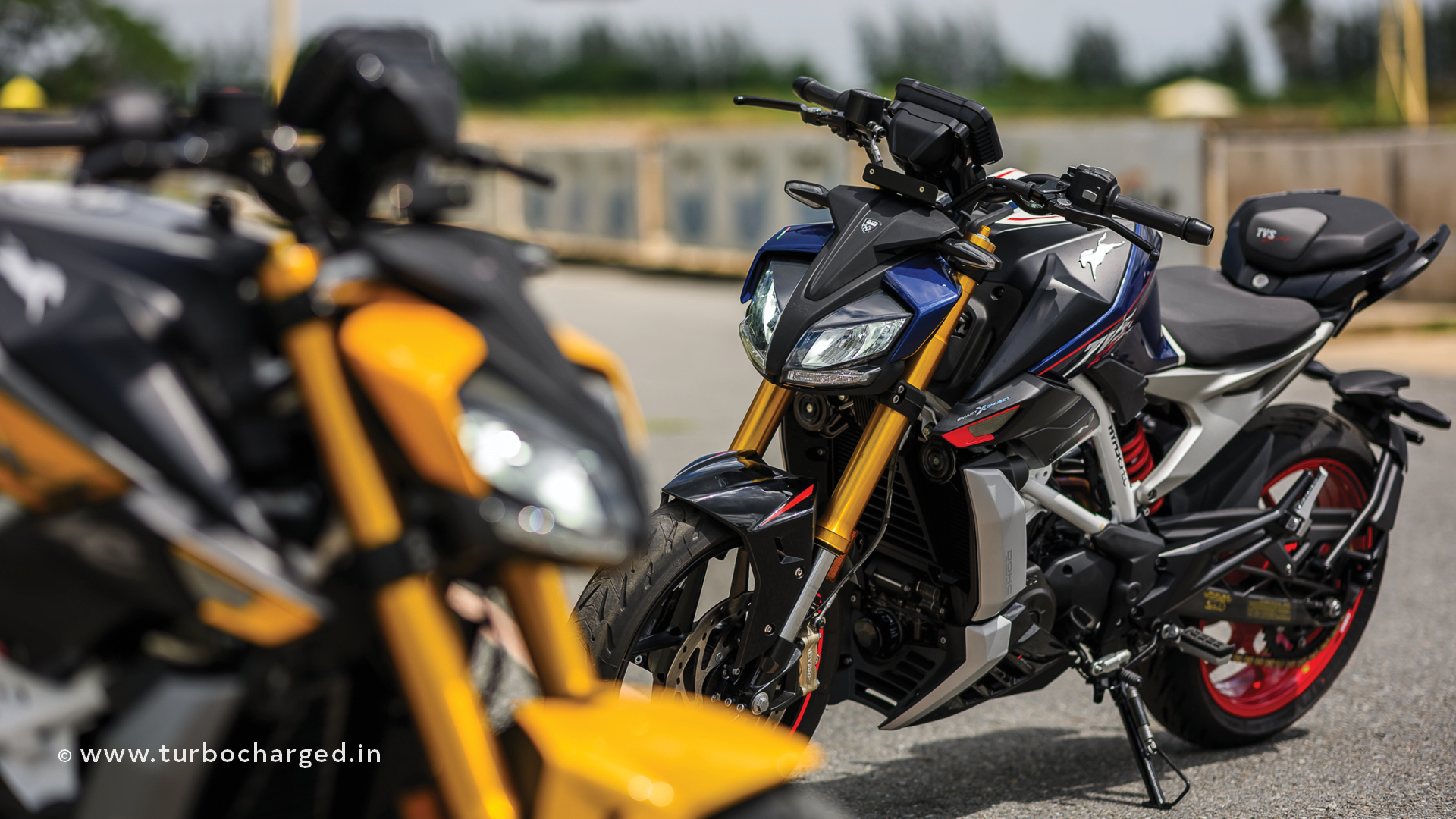
Despite sharing the same platform as the RR310, which launched six years ago, the RTR 310 took longer to come to reality. As a result, the motorcycle now has a lot more contemporary features and styling. For instance, the aesthetic is current and draws inspiration from the most recognisable streetfighters from around the world. It’s an in-house design, and it looks good. Wide dual LED headlights and edgy surrounds with a cyborg theme are mounted on the front. These headlamps are adaptive based on speed and ambient light conditions. This gives the motorcycle a larger-than-realistic appearance, especially when seen from the front. The face has a lot of personality thanks to the perfectly integrated DRLs. In fact, the face is so cool that it is even used as an abstract print on TVS’ official tees.
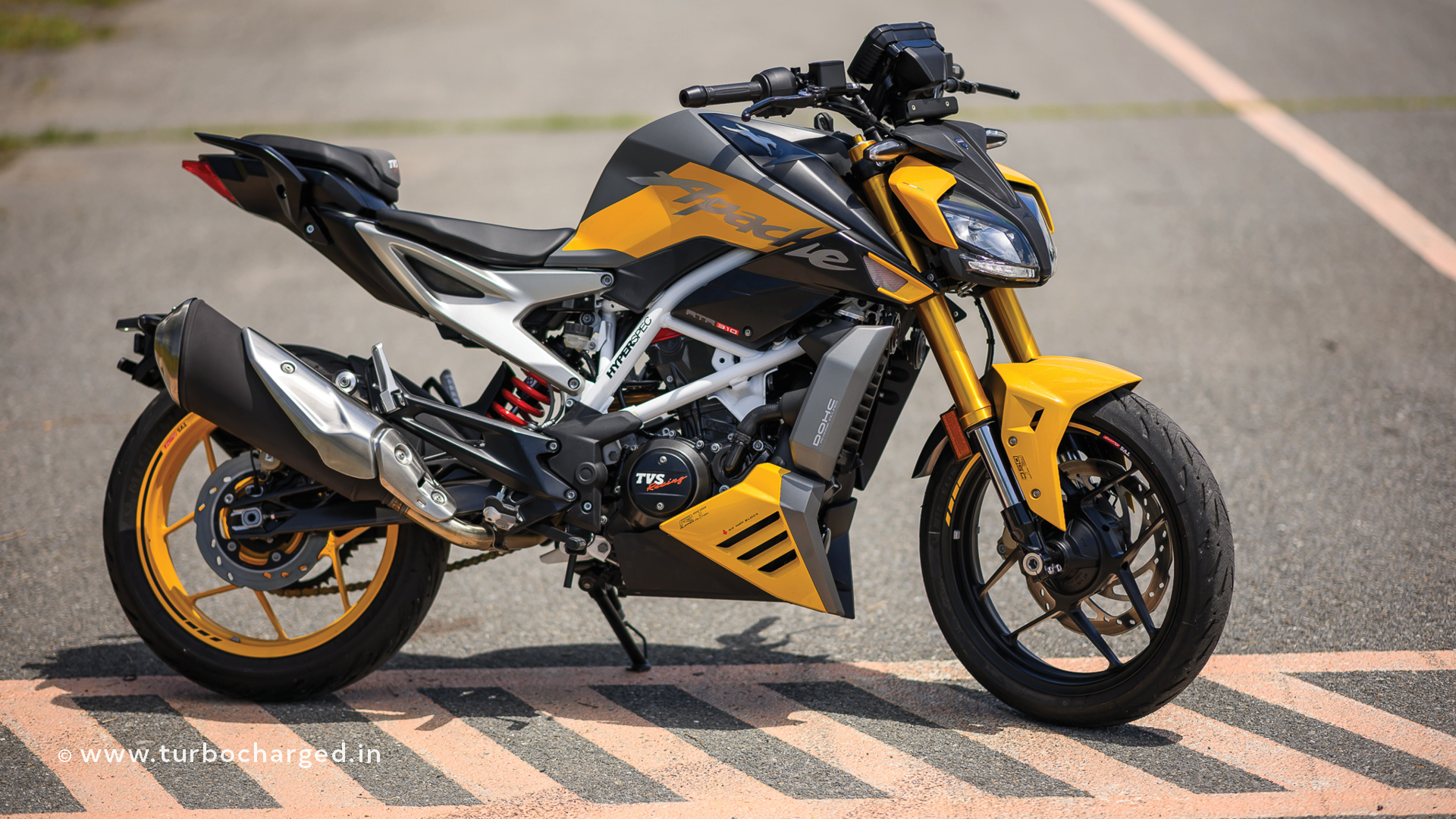
Viewed from the side, and the outside tank panels fit together perfectly and are a suitable size. While the sub frame is substantial and adds mass to the rear section, the trellis chassis is exposed well and painted in white to stand out even more. The wheels are likewise finished in two different hues, and the rear receives a red or yellow paint treatment depending on the shade selected. The dual-tone colours also add to the style. The wheel has an entirely new 8-spoke design and is more aggressively styled than the RR. In contrast to the RR310, split seats are standard, and the pillion seat sits lower and flatter, making it much more useable. The fact that it is a naked motorbike does not mean that there is no mass underneath the tank; rather, TVS designers included a sleek engine cowl and distinctive radiator surrounds. Equally intriguing is the back, where the twin-LED tail lamp has been updated from the Apache’s iconic appearance. While braking strongly, the lamps also flash to alert others behind you. The wheel hugger, which includes the rear number plate holder and blinkers, is another nice feature. Remove the hugger and the RTR 310 is stunt ready and one doesn’t need to install a tail tidy kit.
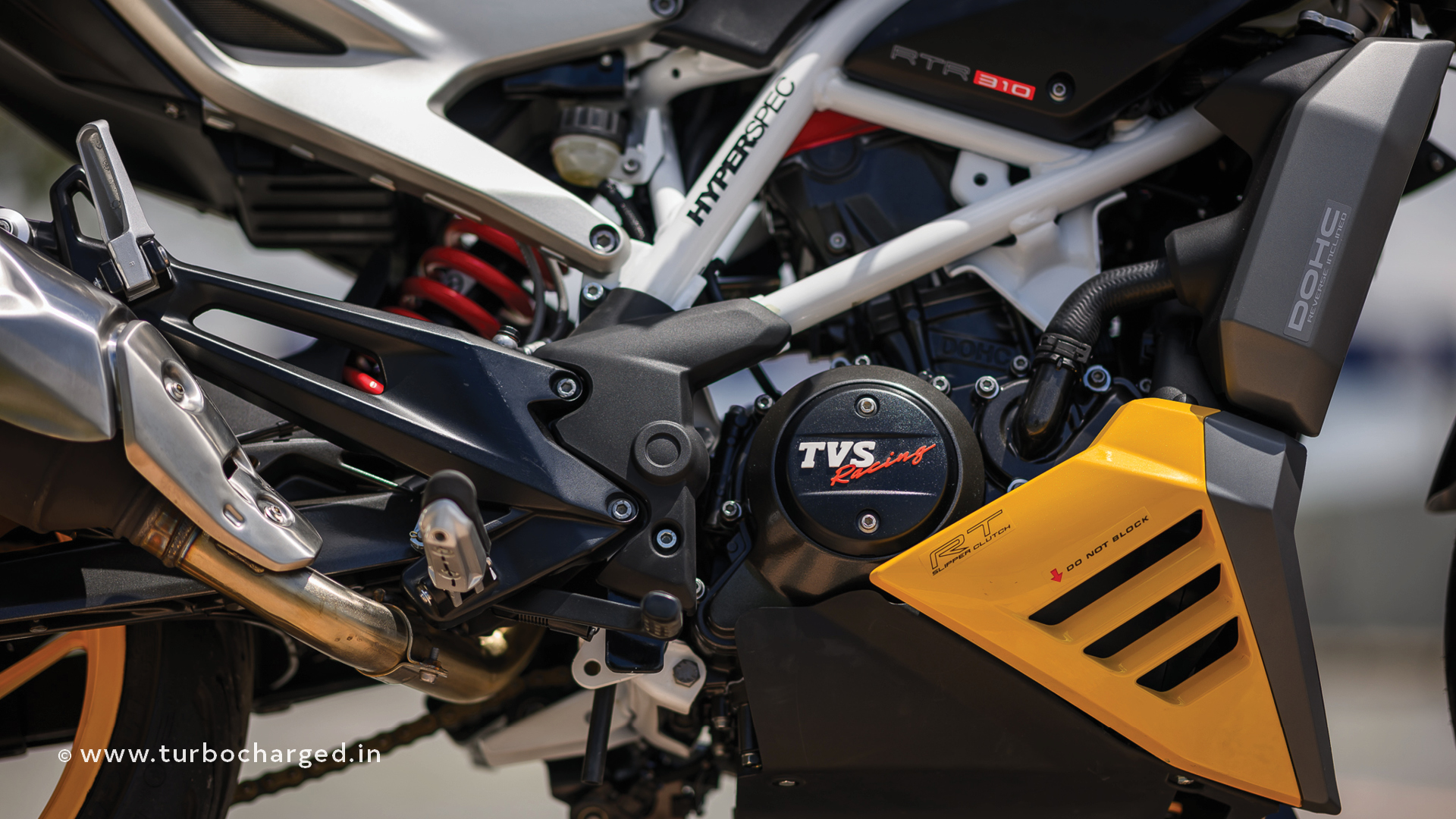
The 312cc motor from the RR310, which has an established track record, powers the RTR 310. However, the engineers were able to get greater performance out of this engine and added a lighter forged aluminium piston. To provide improved acceleration, the rear sprocket size has increased by four teeth, and the throttle body has been modified. As a result, the motorcycle’s maximum power has increased from 34 PS to 35.6 PS at 9700 rpm, while peak torque has increased by almost 1.5 Nm to 28.7 Nm and is now available further down the rpm range. Similar to the RR310, there are four riding modes to choose from: Urban, Rain, Sport, and Track. The RTR lives true to its moniker, and the motor seems far more responsive than the RR right away. However, it will take some time to get used to this quick throttle delivery. The motor only wants to rev up more than is necessary especially while riding through traffic or slower speeds even while utilising the more tranquil Urban mode. It is however stunter friendly.
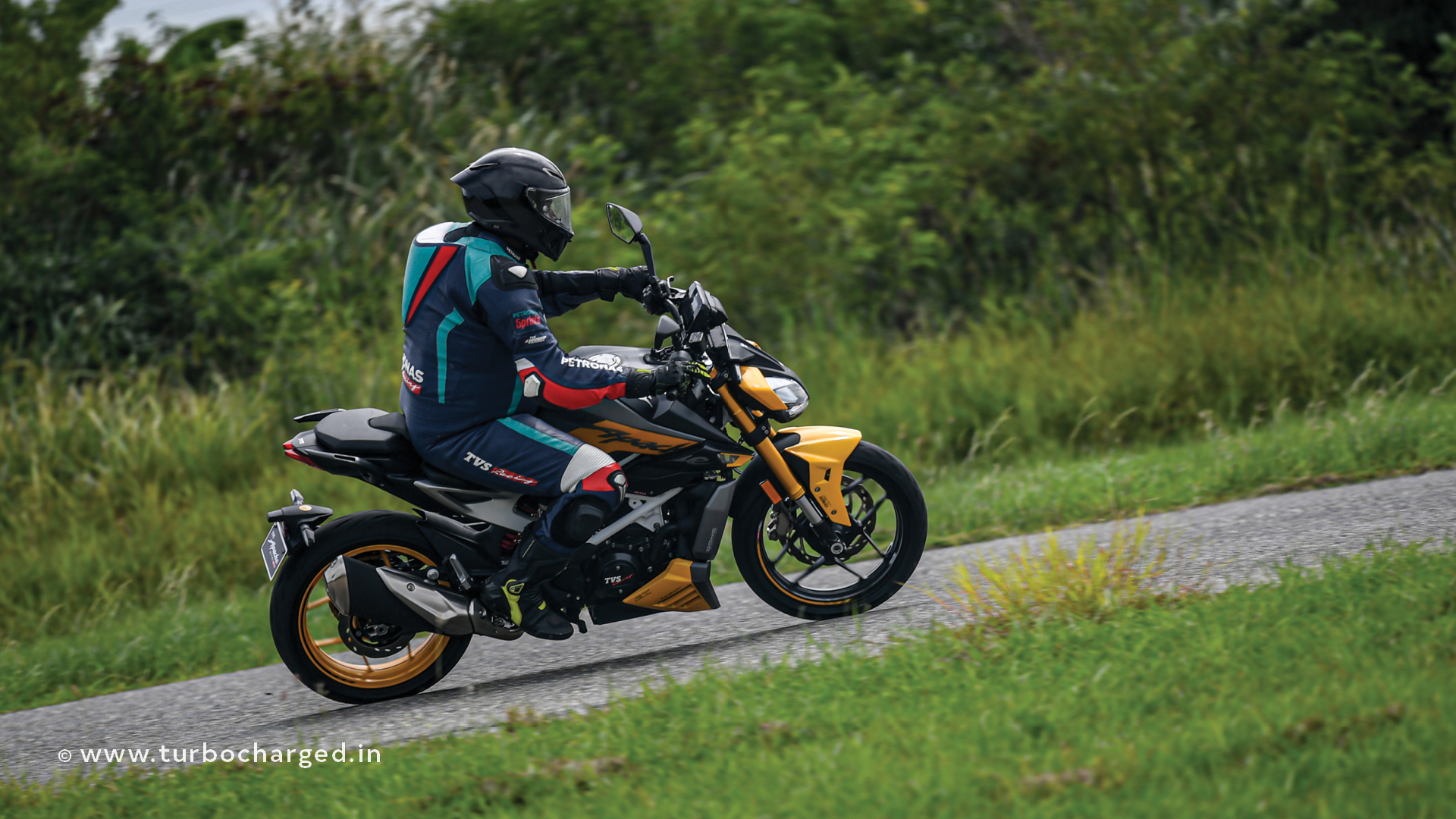
The vehicle accelerates quickly, reaching 60kmph in a claimed 2.81 seconds, quicker than the RR and comparable to the best in the market. However, the claimed dash to the ton is a tad slower than its faired sibling at 7.19s. On the RTR, the engine has a radically different personality and fits the restless motif. Give it some gas, and it will reward the rider with excellent performance; it is also an exceptional tourer thanks to its ability to cruise at triple digit speeds with ease. Despite the RTR 310’s genuine claimed top speed of 150kmph, I eventually pushed it to 160kmph on the clock. The motor appears less smooth than the RR, despite its remarkable performance, and it would have been good if the harshness and vibrations were more muffled.
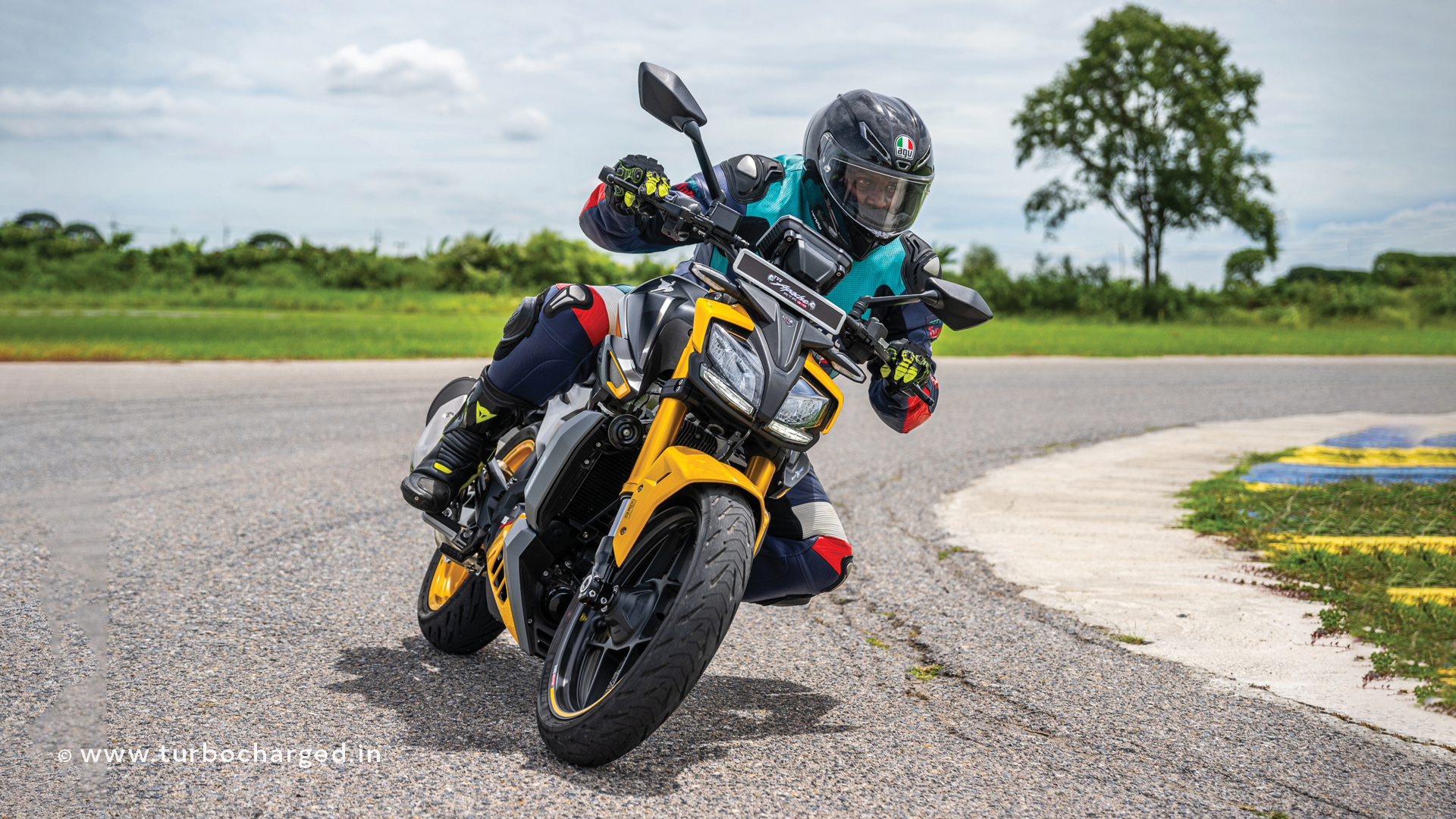
The RTR has excellent dynamics, and both on the racetrack and in town, its sporty frame contributes to exceptional flickability. The shortened wheelbase, altered rake angle, and excellent line-holding of the bike all contribute to a quicker turn-in, as does the riding position. Kudos to TVS for continuing to offer the Michelin Road 5 tyres as standard equipment that significantly improves the handling. Although we did not test the base model, which has non-adjustable suspension, the RTR we rode has KYB’s fully adjustable suspension. The setup handled undulations and some melted pavement rumblers admirably on both an uneven roadway and a bumpy track. However, we will have to ride it back home over potholes and broken surfaces before commenting on the overall ride. Straight line ability is good too and the RTR felt stable even at speeds above 140kmph.
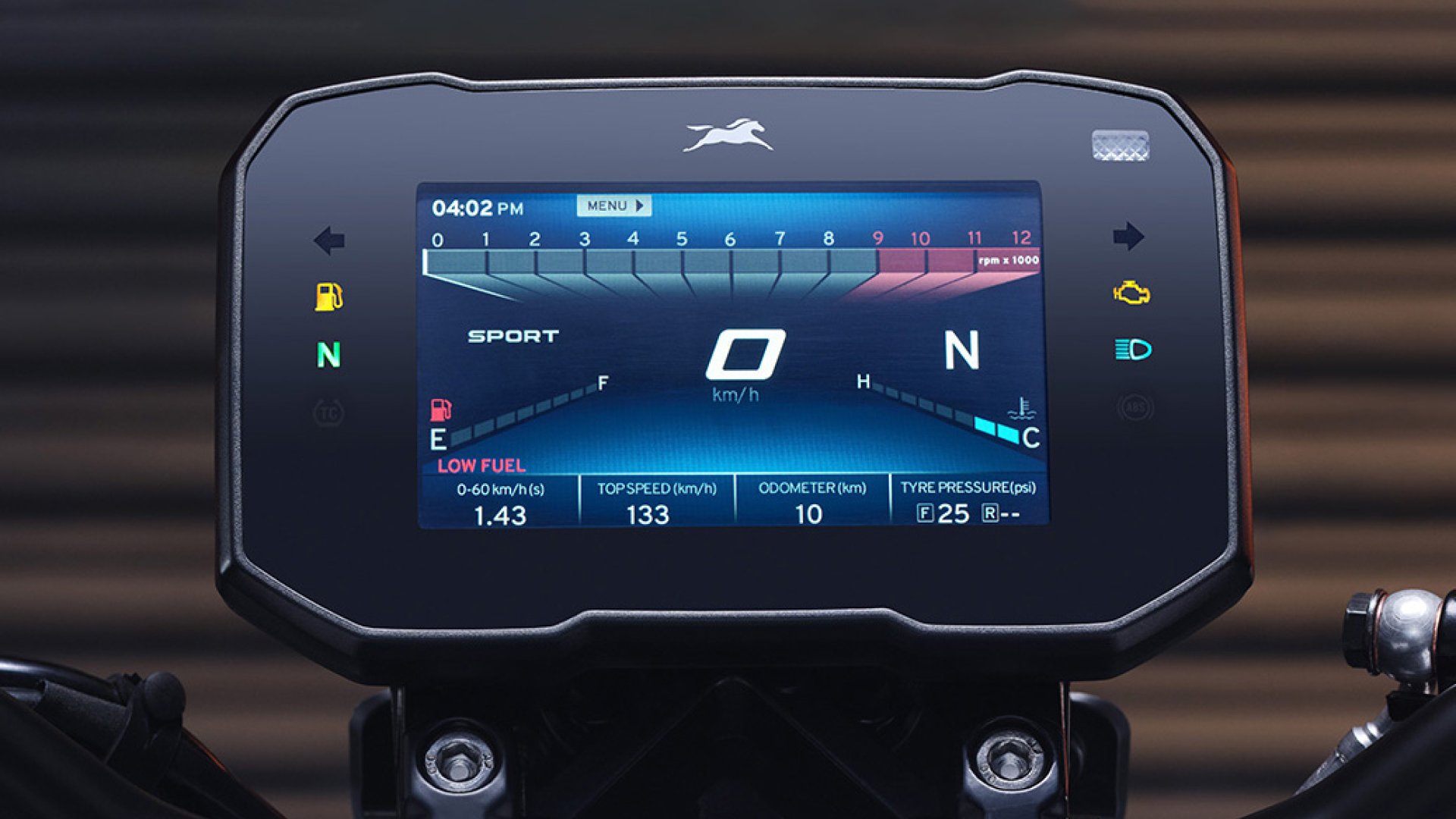
Long lists of features are now a trademark of TVS, and the RTR 310 is no exception. All of the features found on the RR310 and even more are available in the instrument cluster. It has a 5-inch TFT screen, unlike the RR, and a landscape design. There is a lot of information shown, such as performance information, tyre pressure, and Bluetooth caller information. Another choice is to link to and control a compatible GoPro. While Bluetooth and the SmartXonnect software may be used to connect the cluster to a phone or a helmet communication device, it would have been wonderful to see the navigation capability include a maps function.
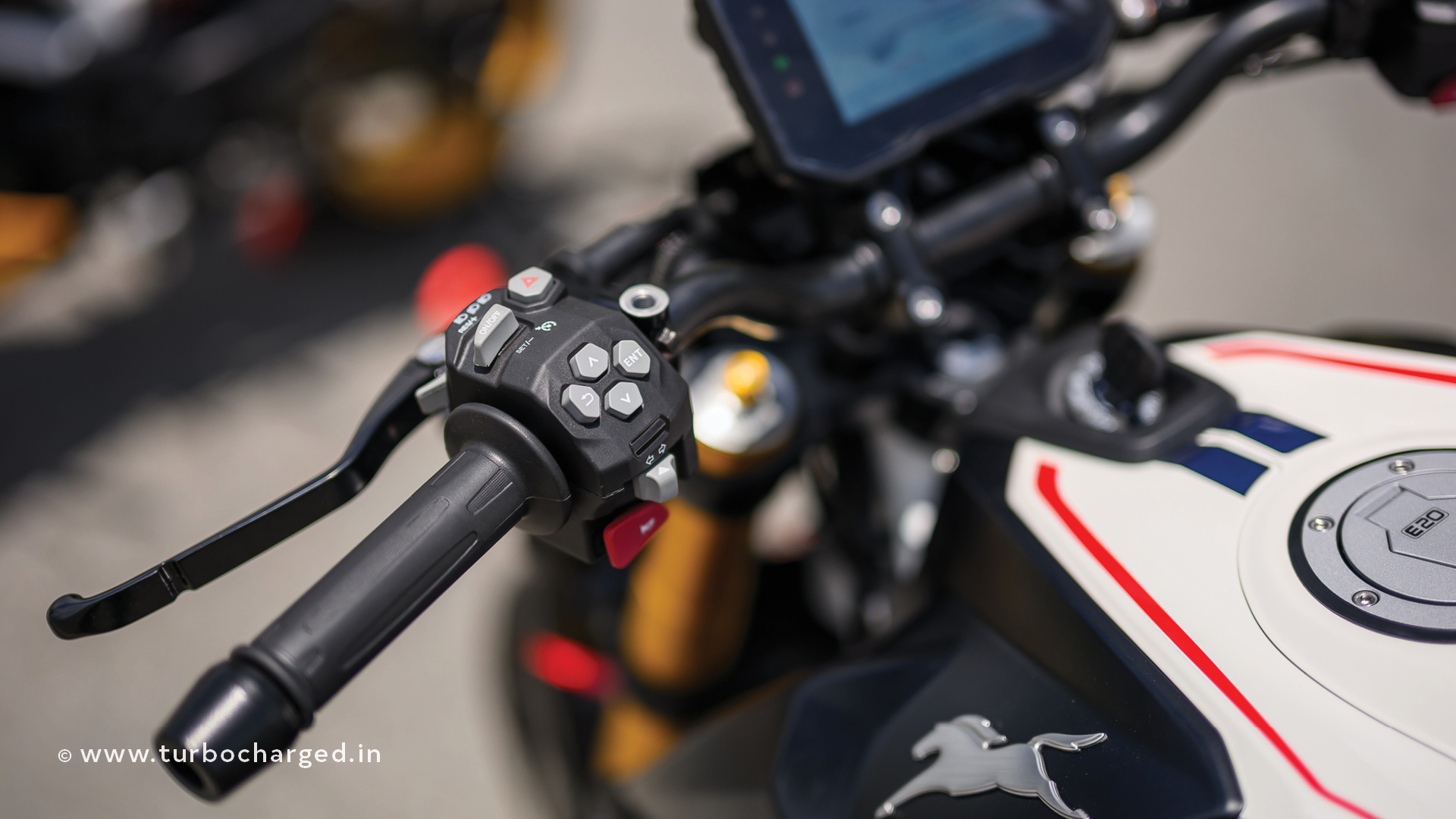
The Dynamic Pro kit provides first-in-segment cornering ABS, cornering cruise control, and cornering traction control, among other safety features. It is the first motorcycle manufactured in India to be equipped with Motorcycle Stability Control (MSC), or as TVS calls it, Race Tuned Dynamic Stability Control (RT DSC), which has been developed in partnership with Bosch. While touring on the smooth Thai highways, the cruise control option was quite useful and effective. It can be quickly initiated by pushing a designated button, and the function can also be toggled to set a speed or resume. The other feature that is probably seen for the first time in the world on a motorcycle from the factory is the climate control seat. Peltier technology is used in the rider seat to cool and heat the seats by up to 15 degrees. Even with riding pants on, you can still feel the cooling, which is impressive given that we tested the function in Bangkok’s hot weather. The heater also functions well, however it would be advisable to try it in a place with lower temperatures. Since the rest of the seat is amply padded, the stiffness of the thermoelectric plate area didn’t seem to have an impact on overall comfort.
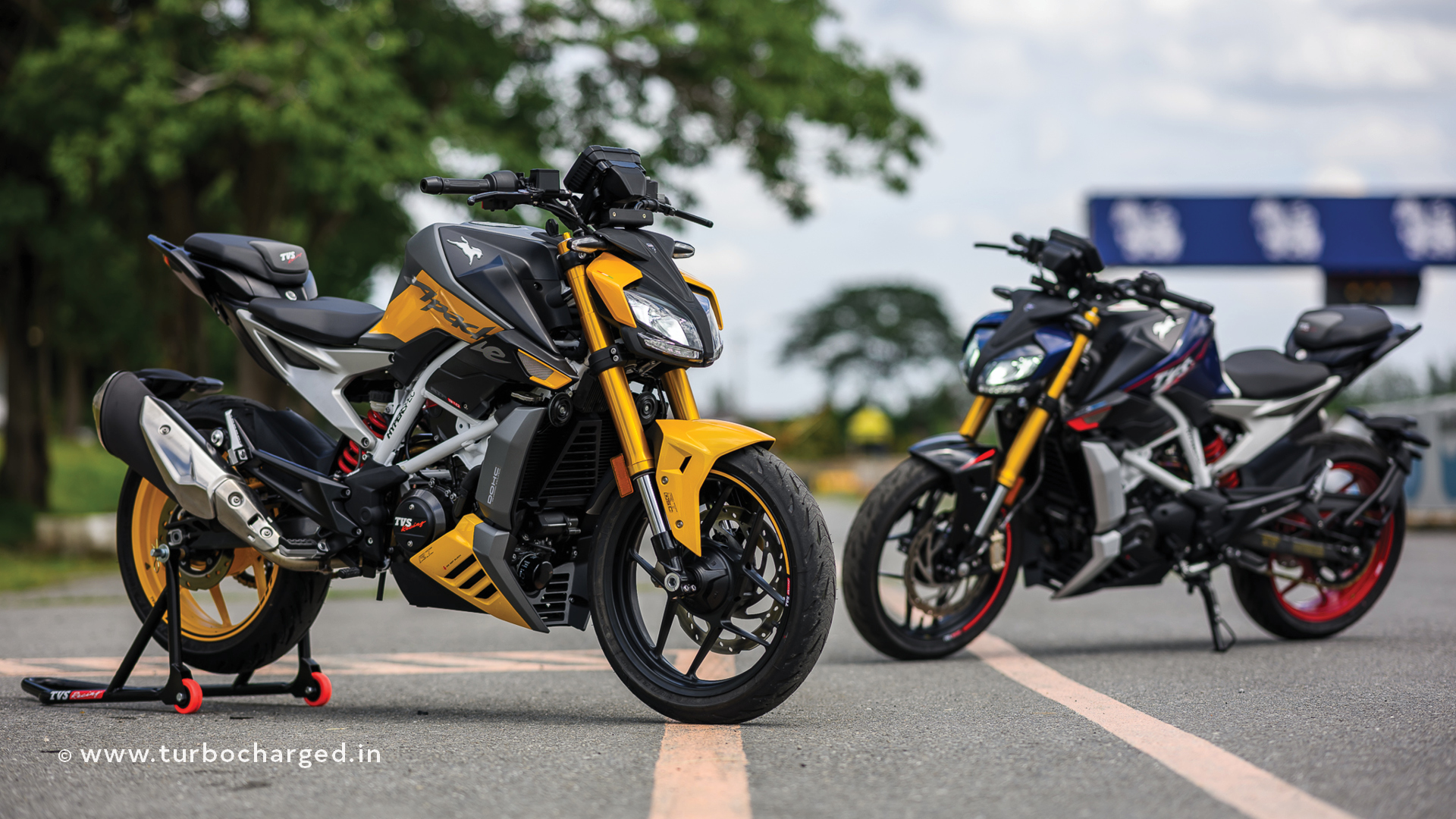
The TVS Apache RTR 310 finally gives Apache loyalists and users looking for a more powerful motorcycle in the 300cc class that is primarily used for both street and touring use. The RTR is priced well too and undercuts the RR310 by almost thirty thousand but can go up if specced to offer all features using the BTO platform. It looks international, is built well and offers a wealth of features too. The starting price of Rs 2.43 lakh, ex-showroom also makes it one of the most affordable offerings in the segment. This ‘freestyler’ as TVS likes to call it is definitely a tempting offering and promises to take the RTR legacy forward.
